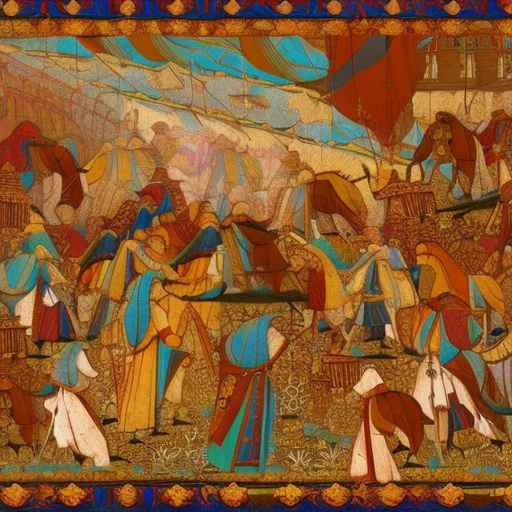The Canterbury Tales: A Collection of Stories from Medieval England
In Geoffrey Chaucer’s “The Canterbury Tales,” a diverse group of pilgrims embarks on a journey to the shrine of Thomas Becket in Canterbury. Along the way, they engage in a storytelling competition, each sharing a tale that reflects their personality, beliefs, and experiences. This collection of stories provides a vivid and entertaining glimpse into the social, cultural, and moral aspects of medieval England.
The Pilgrimage and the Characters
The pilgrimage to Canterbury serves as the backdrop for the storytelling contest. The group consists of 29 pilgrims from various social classes, including nobles, clergy, merchants, and commoners. Each character represents a different facet of medieval society, allowing Chaucer to explore the complexities and contradictions of the time.
Among the memorable characters are the Knight, a chivalrous and honorable warrior; the Wife of Bath, a bold and outspoken woman with multiple husbands; and the Pardoner, a corrupt church official who sells fake relics. Through their tales, Chaucer provides insightful commentary on topics such as love, marriage, religion, and social hierarchy.
The Tales
“The Canterbury Tales” is a collection of 24 stories, with each pilgrim contributing one or more tales. The tales encompass a wide range of genres, including romance, comedy, tragedy, and moral allegory. Some of the most notable tales include:
The Knight’s Tale: A tale of chivalry, love, and rivalry set in ancient Greece.
The Miller’s Tale: A bawdy and humorous story involving a love triangle and mistaken identities.
The Pardoner’s Tale: A cautionary tale about the dangers of greed and the corrupting influence of money.
Each tale reflects the personality and worldview of the pilgrim who tells it, providing a rich tapestry of voices and perspectives. Chaucer’s skillful characterization and vivid storytelling bring these tales to life, captivating readers with their wit, humor, and moral lessons.
Themes and Messages
“The Canterbury Tales” explores several key themes that are still relevant today:
Social Critique: Chaucer uses satire and irony to critique the flaws and hypocrisies of medieval society, particularly the clergy and the nobility.
Gender and Power: The portrayal of women in the tales challenges traditional gender roles and highlights the complexities of female agency and desire.
Morality and Ethics: Many of the tales contain moral lessons and explore questions of virtue, vice, and the consequences of one’s actions.
Chaucer’s work also provides valuable insights into the language, customs, and values of medieval England. It is considered a masterpiece of English literature and a significant contribution to the development of storytelling.
Key Takeaways:
- The Canterbury Tales is a collection of stories told by a diverse group of pilgrims on their way to Canterbury.
- The tales reflect the social, cultural, and moral aspects of medieval England.
- Chaucer uses satire and irony to critique society, explores gender and power dynamics, and imparts moral lessons.
“Whan that Aprill with his shoures soote, The droghte of March hath perced to the roote.”
– Geoffrey Chaucer












